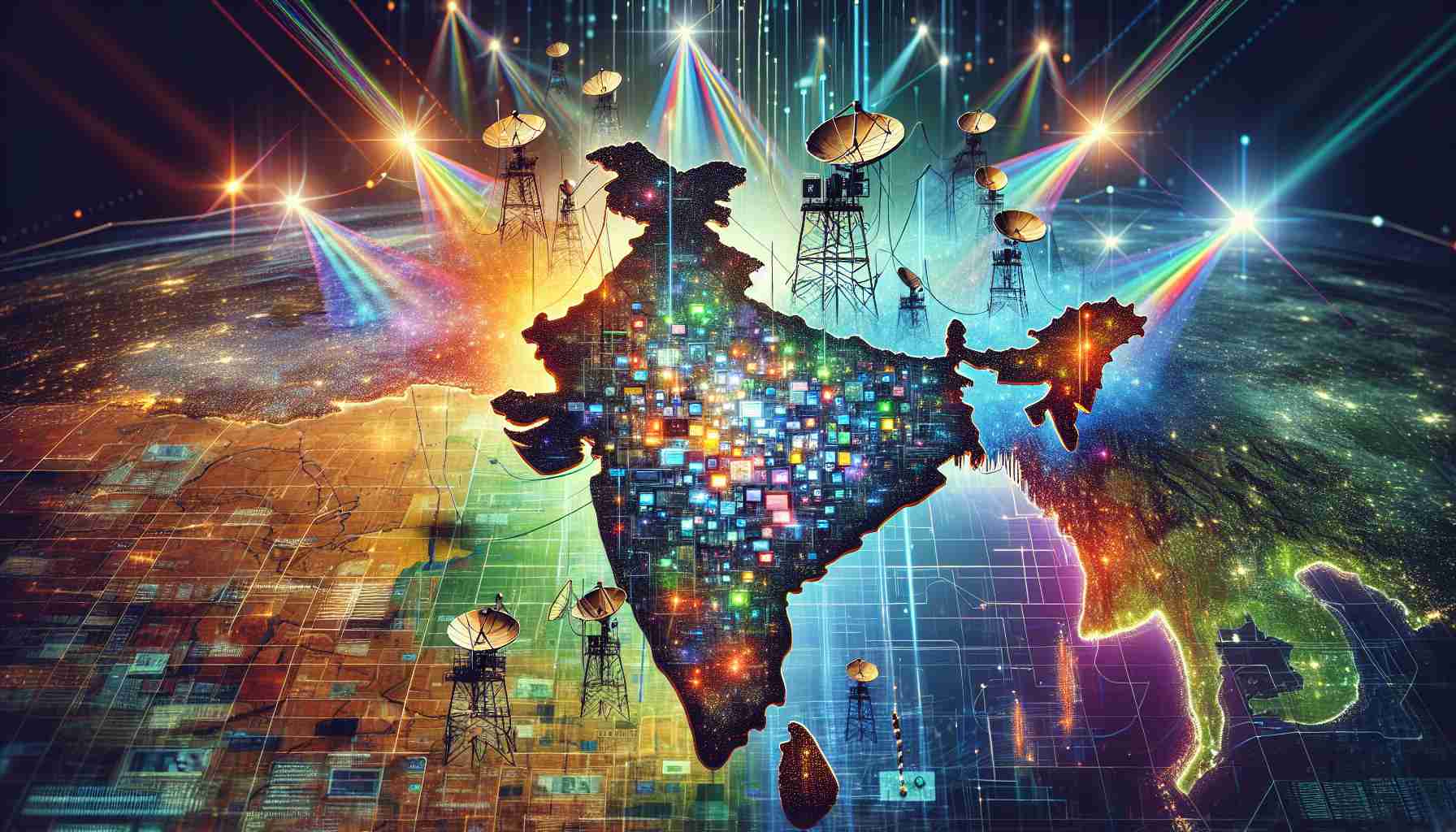
India’s telecommunications sector is on the brink of transformation as major players like Reliance Jio and Starlink engage in a competitive struggle for satellite spectrum. The government is set to initiate the allocation of this vital resource, essential for enhancing internet accessibility across remote regions. The Telecom Regulatory Authority of India (TRAI) has expressed its commitment to evaluating industry feedback thoroughly before finalizing its approach, indicating a measured response to the evolving landscape.
Reliance Jio has been vocal about its advocacy for spectrum auctions, aligning with Bharti Enterprises, headed by Sunil Bharti Mittal, who also supports this method. Meanwhile, Starlink, owned by entrepreneur Elon Musk, cautions against auctioning, asserting that it deviates from global practices and complicates the entry of innovative technologies into the Indian market.
Satellite spectrum encompasses a range of frequencies that enable communication via satellites, significantly boosting internet capabilities, especially where traditional networks falter. The competition amongst companies for this limited resource intensifies, as satellite communications promise wider coverage and high speeds without being tied to a ground infrastructure.
The controversy surrounding auction versus allocation remains central. Advocates for auction believe it ensures fairness in the marketplace, whereas government officials are inclined toward administrative allocation due to its reduced complexity and cost implications. As regulatory discussions unfold, the potential growth of India’s satellite service market is optimistic, projected to reach $1.9 billion by 2030, contingent on affordability and effective public-private partnerships that can bridge the digital divide.
The Dynamic Clash for Satellite Spectrum in India’s Telecom Landscape
As the race for satellite spectrum heats up in India’s telecommunications sector, the implications for growth, competition, and technological advancement are monumental. Not only are key players striving for dominance, but the spectrum allocation also poses vital questions about the future of internet access in the country, particularly in underserved areas.
What are the key questions surrounding satellite spectrum allocation in India?
1. How will the government determine the allocation method?
The government is weighing options between auctions and administrative allocations. A transparent decision-making process is needed to ensure the method chosen fosters competition while encouraging investment.
2. What is the expected impact on pricing for consumers?
Dependable access to satellite services could lead to price reductions in internet services, enhancing affordability for consumers, especially in rural regions where traditional infrastructure is lacking.
3. Will there be sufficient investment in infrastructure?
Ensuring that satellite technology is fully realized will require significant investment not just in satellites, but in ground stations and local partnerships that can optimize service delivery.
Key Challenges and Controversies
1. Regulatory Uncertainty: The ongoing discussion surrounding auctioning versus administrative allocation introduces uncertainty for the industry. Stakeholders worry that prolonged indecision may stifle investment and inhibit the launch of new services.
2. Technological Innovation: Starlink’s emphasis on avoiding auctions highlights a concern that auctioning might inhibit the swift introduction of innovative technologies. The challenge lies in balancing fair market practices with an environment conducive to technological advancement.
3. Digital Divide: The expected growth of the satellite service market to $1.9 billion by 2030 raises questions of inclusivity. Will the services reach the most underserved, or will they primarily cater to urban and affluent populations? Bridging this gap is crucial for equitable technology access.
Advantages and Disadvantages
Advantages:
– Wider Coverage: Satellite communications can reach remote areas that are often neglected by terrestrial networks, enhancing connectivity.
– Reduced Infrastructure Costs: Unlike traditional telecom models, satellite installation can be quicker and less costly, as it avoids the need for extensive ground infrastructure.
– High-Speed Internet: The capacity for high-speed data transmission can offer competitive services compared to existing land-based solutions.
Disadvantages:
– Latency Issues: Satellite internet can experience higher latency compared to fiber-optic networks, which could affect activities such as online gaming and video conferencing.
– Cost of Technologies: Initial deployment and operational costs for satellite systems can be significantly high, impacting the price point for end-users.
– Interference and Regulation: Navigating regulatory frameworks and ensuring spectrum is free from interference from other operations is a significant operational hurdle.
As the competition for satellite spectrum continues to intensify within India, the resolution of these fundamental questions and challenges will determine the efficiency and effectiveness of the nation’s digital transformation. It will be crucial for stakeholders—including government bodies, telecom companies, and consumers—to engage continually in discussions that shape the future landscape of telecommunications in India.
For further insights into the evolving telecom space in India, visit TRAI.



